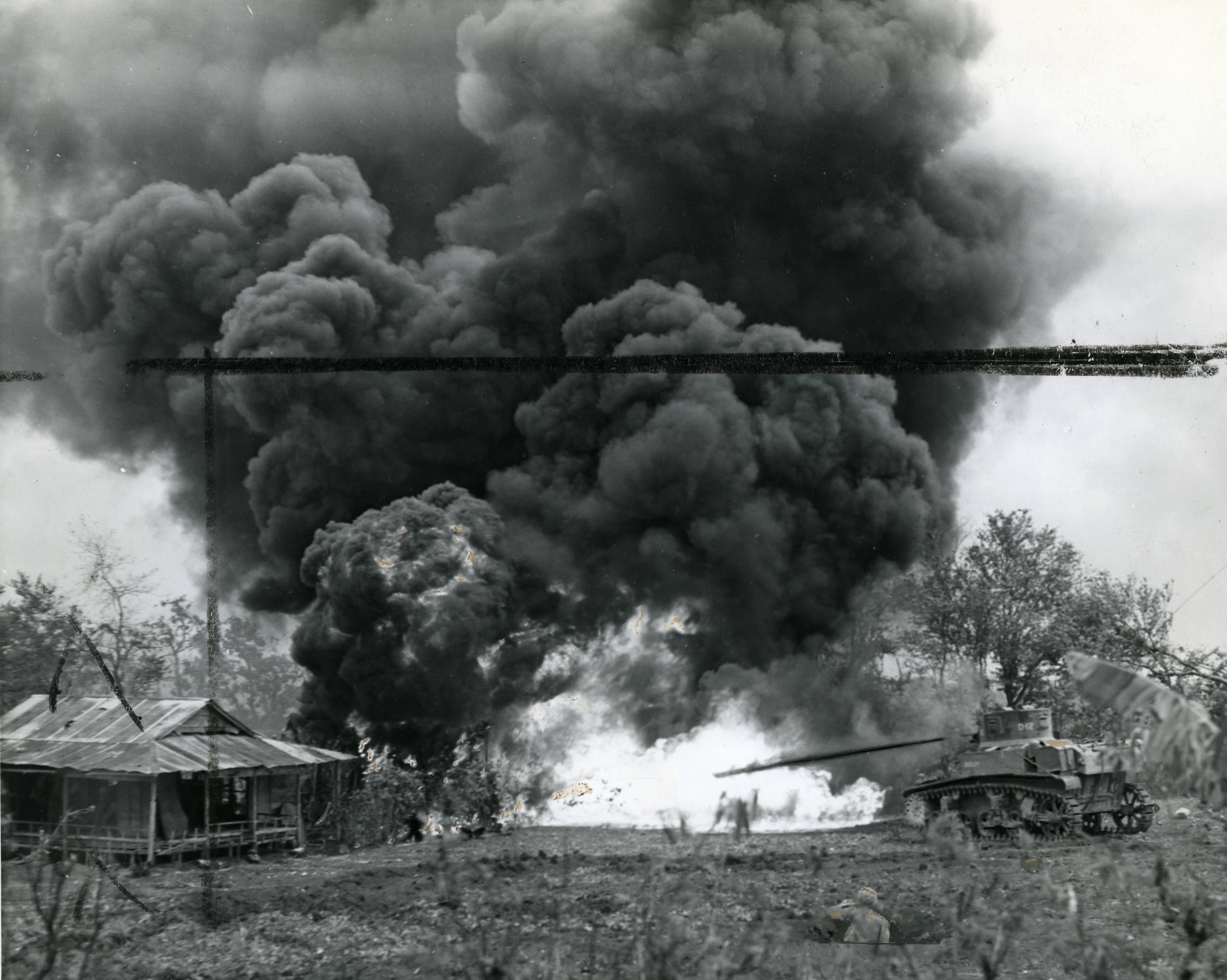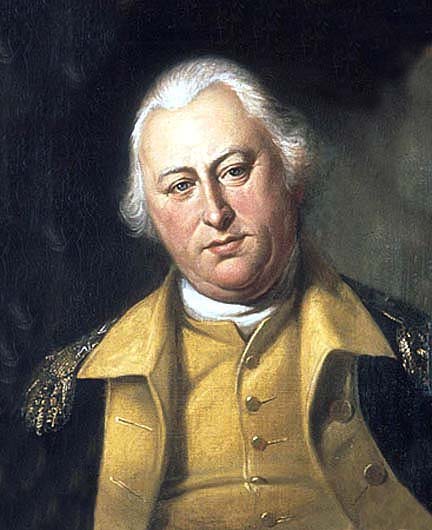|
Flame Throwing Seabees
During WWII United States Naval Construction Battalions ("Seabees") modified/created all of the main armament flame throwing tanks that were used in the Pacific War: by USMC in the Battle of Saipan, Battle of Tinian, Battle of Iwo Jima, and by the U.S. Army in the Battle of Okinawa. They were a weapon Japanese troops feared and the Marine Corps said was the best weapon they had in the taking of Iwo Jima.Chapter: the Bitter End, CLOSING IN: Marines in the Seizure of Iwo Jima, Colonel Joseph H. Alexander, USMC (Ret), History and Museums Division, Headquarters, U.S. Marine Corps, Washington, D.C., 1994, p.3/ref> After Okinawa the Army stated that the tanks had a psychological presence on the battlefield. U.S. troops preferred to follow them over standard armor for the fear they put in the enemy. Pacific field commanders had tried field modified mechanized flame throwers early on, with the Marine Corps deciding to leave further development to the Army. The Navy had an intere ... [...More Info...] [...Related Items...] OR: [Wikipedia] [Google] [Baidu] |
Gun Laying
A gun is a ranged weapon designed to use a shooting tube (gun barrel) to launch projectiles. The projectiles are typically solid, but can also be pressurized liquid (e.g. in water guns/cannons, spray guns for painting or pressure washing, projected water disruptors, and technically also flamethrowers), gas (e.g. light-gas gun) or even charged particles (e.g. plasma gun). Solid projectiles may be free-flying (as with bullets and artillery shells) or tethered (as with Taser guns, spearguns and harpoon guns). A large- caliber gun is also called a ''cannon''. The means of projectile propulsion vary according to designs, but are traditionally effected pneumatically by a high gas pressure contained within the barrel tube, produced either through the rapid exothermic combustion of propellants (as with firearms), or by mechanical compression (as with air guns). The high-pressure gas is introduced behind the projectile, pushing and accelerating it down the length of the tube ... [...More Info...] [...Related Items...] OR: [Wikipedia] [Google] [Baidu] |
Atomic Bomb
A nuclear weapon is an explosive device that derives its destructive force from nuclear reactions, either fission (fission bomb) or a combination of fission and fusion reactions ( thermonuclear bomb), producing a nuclear explosion. Both bomb types release large quantities of energy from relatively small amounts of matter. The first test of a fission ("atomic") bomb released an amount of energy approximately equal to . The first thermonuclear ("hydrogen") bomb test released energy approximately equal to . Nuclear bombs have had yields between 10 tons TNT (the W54) and 50 megatons for the Tsar Bomba (see TNT equivalent). A thermonuclear weapon weighing as little as can release energy equal to more than . A nuclear device no larger than a conventional bomb can devastate an entire city by blast, fire, and radiation. Since they are weapons of mass destruction, the proliferation of nuclear weapons is a focus of international relations policy. Nuclear weapons have been deplo ... [...More Info...] [...Related Items...] OR: [Wikipedia] [Google] [Baidu] |
B-29
The Boeing B-29 Superfortress is an American four-engined propeller-driven heavy bomber, designed by Boeing and flown primarily by the United States during World War II and the Korean War. Named in allusion to its predecessor, the B-17 Flying Fortress, the Superfortress was designed for high-altitude strategic bombing, but also excelled in low-altitude night incendiary bombing, and in dropping naval mines to blockade Japan. B-29s dropped the atomic bombs on Hiroshima and Nagasaki, the only aircraft ever to drop nuclear weapons in combat. One of the largest aircraft of World War II, the B-29 was designed with state-of-the-art technology, which included a pressurized cabin, dual-wheeled tricycle landing gear, and an analog computer-controlled fire-control system that allowed one gunner and a fire-control officer to direct four remote machine gun turrets. The $3 billion cost of design and production (equivalent to $ billion today), far exceeding the $1.9 ... [...More Info...] [...Related Items...] OR: [Wikipedia] [Google] [Baidu] |
Robert Patterson
Robert Patterson (January 12, 1792 – August 7, 1881) was an Irish-born United States major general during the American Civil War, chiefly remembered for inflicting an early defeat on Stonewall Jackson, but crucially failing to stop Confederate General Joseph E. Johnston from joining forces with P. G. T. Beauregard at the First Battle of Bull Run. He is still blamed for this historic Union defeat. Early life and War of 1812 Patterson was born in Cappagh, County Tyrone, Ireland. His family was banished from Ireland due to his father's involvement in insurrectionism. In 1799, he emigrated to the United States, and eventually involved himself in banking. Patterson received his education in public schools and afterward became a clerk at a Philadelphia counting house. Volunteering for service during the War of 1812, he rose from the rank of captain to colonel in the 2nd Pennsylvania Militia, before joining the United States Army. He served in the Quartermaster General Depart ... [...More Info...] [...Related Items...] OR: [Wikipedia] [Google] [Baidu] |
Secretary Of War
The secretary of war was a member of the U.S. president's Cabinet, beginning with George Washington's administration. A similar position, called either "Secretary at War" or "Secretary of War", had been appointed to serve the Congress of the Confederation under the Articles of Confederation between 1781 and 1789. Benjamin Lincoln and later Henry Knox held the position. When Washington was inaugurated as the first President under the Constitution, he appointed Knox to continue serving as Secretary of War. The secretary of war was the head of the War Department. At first, he was responsible for all military affairs, including naval affairs. In 1798, the secretary of the Navy was created by statute, and the scope of responsibility for this office was reduced to the affairs of the United States Army. From 1886 onward, the secretary of war was in the line of succession to the presidency, after the vice president of the United States, the Speaker of the House of Representativ ... [...More Info...] [...Related Items...] OR: [Wikipedia] [Google] [Baidu] |
Napalm
Napalm is an incendiary mixture of a gelling agent and a volatile petrochemical (usually gasoline (petrol) or diesel fuel). The name is a portmanteau of two of the constituents of the original thickening and gelling agents: coprecipitated aluminium salts of naphthenic acid and palmitic acid. Napalm B is the more modern version of napalm (utilizing polystyrene derivatives) and, although distinctly different in its chemical composition, is often referred to simply as "napalm". A team led by chemist Louis Fieser originally developed napalm for the US Chemical Warfare Service in 1942 in a secret laboratory at Harvard University. Of immediate first interest was its viability as an incendiary device to be used in fire bombing campaigns during World War II; its potential to be coherently projected into a solid stream that would carry for distance (instead of the bloomy fireball of pure gasoline) resulted in widespread adoption in infantry flamethrowers as well. Napalm burns at ... [...More Info...] [...Related Items...] OR: [Wikipedia] [Google] [Baidu] |
Tenth United States Army
The Tenth United States Army was the last army level command established during the Pacific War during World War II, and included divisions from both the U.S. Army and the U.S. Marine Corps. History The headquarters of the Tenth Army was formed in June 1944 at Pearl Harbor, Hawaii with the original intent of being the headquarters element for the land forces of the planned invasion of Taiwan. Following a conference at Pearl Harbor in July between President Franklin D. Roosevelt, Admiral Chester W. Nimitz and General Douglas MacArthur, it was decided to invade the Philippines instead of Taiwan. As a result, the Tenth Army did not have an operational assignment until the invasion of Okinawa in April 1945. Commanders The Tenth Army was commanded by Lieutenant General Simon Bolivar Buckner Jr. from its activation on 20 June 1944 until he was killed by enemy artillery fire on Okinawa on 18 June 1945. Major General Roy Geiger, USMC assumed temporary command, becoming the first ... [...More Info...] [...Related Items...] OR: [Wikipedia] [Google] [Baidu] |
Electrician's Mate
Electrician's Mate (abbreviated as EM) is a United States Navy and United States Coast Guard occupational rating. The Electrician's Mate's NOS is B210. History The Navy Electrician rating was established in 1883, then promptly disestablished in 1884, only to be re-established as a Navy rating in 1898. The Electrician rating changed to its current name, Electrician's Mate, in 1921. Duties Electrician's Mates stand watch on generators, switchboards, control equipment and electrical equipment; operate and perform organizational and intermediate maintenance on power and lighting circuits, electrical fixtures, motors, generators, voltage and frequency regulators, controllers, distribution switchboards and other electrical equipment; test for short circuits, ground or other casualties; and rebuild electrical equipment, including solid state circuitry elements, in an electrical shop. Requirements A pre-qualified and selected group of Electrician's Mates attend the Naval Nucl ... [...More Info...] [...Related Items...] OR: [Wikipedia] [Google] [Baidu] |
M4 Sherman
} The M4 Sherman, officially Medium Tank, M4, was the most widely used medium tank by the United States and Western Allies in World War II. The M4 Sherman proved to be reliable, relatively cheap to produce, and available in great numbers. It was also the basis of several other armored fighting vehicles including self-propelled artillery, tank destroyers, and armored recovery vehicles. Tens of thousands were distributed through the Lend-Lease program to the British Commonwealth and Soviet Union. The tank was named by the British after the American Civil War General William Tecumseh Sherman. The M4 Sherman evolved from the M3 Medium Tank, which for speed of development had its main armament in a side sponson mount. The M4 retained much of the previous mechanical design, but moved the main 75 mm gun into a fully traversing central turret. One feature, a one-axis gyrostabilizer, was not precise enough to allow firing when moving but did help keep the gun aimed in rough ... [...More Info...] [...Related Items...] OR: [Wikipedia] [Google] [Baidu] |








